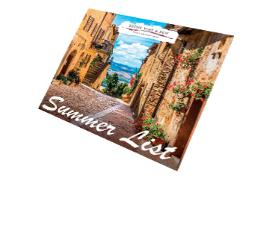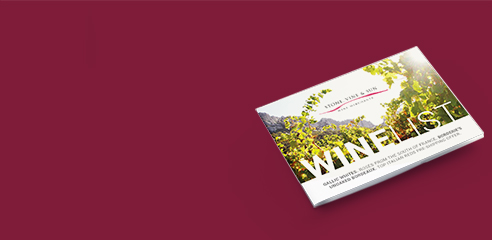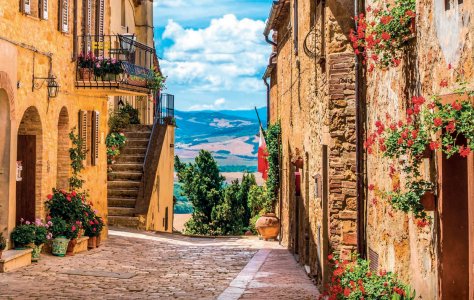South Africa
You certainly know when you are in an African vineyard - you are told to watch out for puff adders, and you can see the paths left on the surrounding hills by troops of raiding baboons.
I covered fifteen hundred miles around the Cape winelands in April 2009, and it was a hugely stimulating trip. There is no doubt that quality is improving year on year in South Africa, whilst prices remain mercifully stable: there are some cracking values here, at every price level, whether Goedverwacht’s Merlot at £6.25 or the Ataraxia Chardonnay at £13.50.
Why is or printed list subtitled “Ancient and Modern”? First, because we have to get away from the idea that South Africa is a “New World” wine country. The first grape harvest for wine in the Cape was exactly three hundred and fifty years ago! At Meerlust one tastes the wine in a farm building dating to 1693; at the current site of Vondeling, out on the Paardeberg, the planting of vines is documented to 1720; the Van Niekerks are fifth generation farmers at Knorhoek; and at Rustenberg wine has been bottled continuously since 1892, far longer than at most French estates. South Africa, unlike Chile or New Zealand, has long enjoyed a wine culture.
Along with that history come notions of national style, a concept difficult to pin down, but unquestionably relevant to Cape reds, which so often evince an earthiness which is distinctively South African, and yet very much “Old World” in its correspondence to the French notion of terroir, encompassing not just the soils, the vines and the climate, but also the yeasts in the cellar, wine-making practice and so forth. There is no question that Meerlust’s Rubicon or Solms-Delta’s Hiervandaan are terroir wines in an “Old World” idiom.
As for the “Modern”, while we love history, we seek out the best new wineries too. All three of our growers in the Hemel-en-Aarde Valley are picking grapes from vineyards on uplands grazed by sheep not much more than a decade ago. At Creation there’s a dazzling new winery and tasting room, and many others are under construction. The advantage latecomers have is to start with better plant material, resistant to the leaf-roll virus which blights many South African vineyards, better matched to their specific site than hitherto.
Furthermore Cape wineries need not be bound by any European traditions of grape varieties to be combined in a wine. Some of the most successful wines in this list are, by European standards, unusual blends: the tapestry of varieties that go into Knorhoek’s Two Cubs red, Ataraxia’s Serenity or Vondeling’s Petit Blanc are unconventional, yet make such attractive wines.
In conclusion, what is exciting about the South African wine scene today is that New World energy, creativity and innovation is being successfully grafted on to an Old World wine sensibility. Whilst there are some very fruit-driven styles, nevertheless most South African wines stand confidently between “Old World” and “New”. For example, Cape Sauvignon Blancs tend to show more overt fruit than those from the Loire, yet less so than those from New Zealand or Chile; and Stellenbosch Bordeaux blends may have higher alcohol levels than those from Bordeaux, but their flavour profile is more akin to claret than to the fruit bombs of Western Australia or Napa Valley. Many of estates shipped by us are at the forefront of carving out a distinctive and original Cape identity.
Simon Taylor
June 2009
Robertson and Eilandia
The winemakers in this area - “over the mountains” - used to be patronised by the old boys in Stellenbosch, but whilst Robertson remains one of the best sources of good value Cape wine, the success of Sauvignon Blanc, Chardonnay and even sparkling wine here has made the burghers of Stellenbosch sit up and take notice. Though it is very dry (irrigation from the Breede river being vital), and extremely hot in summer, there’s also a marked diurnal change of temperature which gives balance to the wines.
Our estates: Goedverwacht
Stellenbosch and Environs
The proliferation of wineries around Stellenbosch is extraordinary: even locals can’t keep up with the number opening each year. The name still has such a draw, and it is justified: Adie Badenhorst, former winemaker at Rustenberg, pronounced that Stellenbosch was one of the best places in the world for grape production.
Our estates: False Bay, Knorhoek, Le Riche Wines, Meerlust, Rustenberg
Franschhoek
Though technically a sub-district of Paarl, Franschhoek has a character all of its own. Just as the pretty town was first settled in the late 1680s by Huguenots, who brought French wine expertise with them, so the valley is highly cosmopolitan now, attracting overseas investment into real estate and wineries. The better vineyards lie on the slopes of the surrounding mountains rather than on the alluvial valley floor.
Our estates: Cape Chamonix, Solms-Delta
Hemel-en-Aarde Valley, Walker Bay
The Hemel-en-Aarde Valley, which literally translates as Heaven on Earth, rises prettily from just west of Hermanus. When we first visited in 2003 the wineries were all in the lower part of the valley, but more recently pioneers have begun planting in the Upper Valley - higher, drier, with warmer days but cooler nights - and now we are working with no less than three such estates. Enjoying naturally low pH soils, and moderate temperatures, this really is a sweet spot in the Cape, excellent for both whites and reds, and with a sense of community and mutual support and respect among the valley’s winemakers.
Our estates: Ataraxia Mountain Vineyards, Spookfontein
Paarl and Swartland
North of Paarl the landscape changes. The towns, densely planted vineyards and concentration of small wine farms gives way to open, sweeping plains, planted more with wheat than vines, divided by jagged mountain ranges. It’s hotter out here, though the vines on the ridges such as the Paardeberg and the Riebeekberg, benefit from south-westerly breezes from the Atlantic bringing cloud and rain.
Our estates: Kloovenberg and Vondeling
The north-west and the far south: cooler climes of the Cape
It would be logical to assume that as one heads 200 kilometres north of Cape Town that the vineyards would be hotter - but not in the case of Fryer's Cove at Bamboes Bay and Cederberg, our two estates in the north-west of the Cape winelands: the former is on the frigid Atlantic, the latter cooled by over 1,000 metres of altitude.
Our estates: Fryer's Cove and Cederberg




